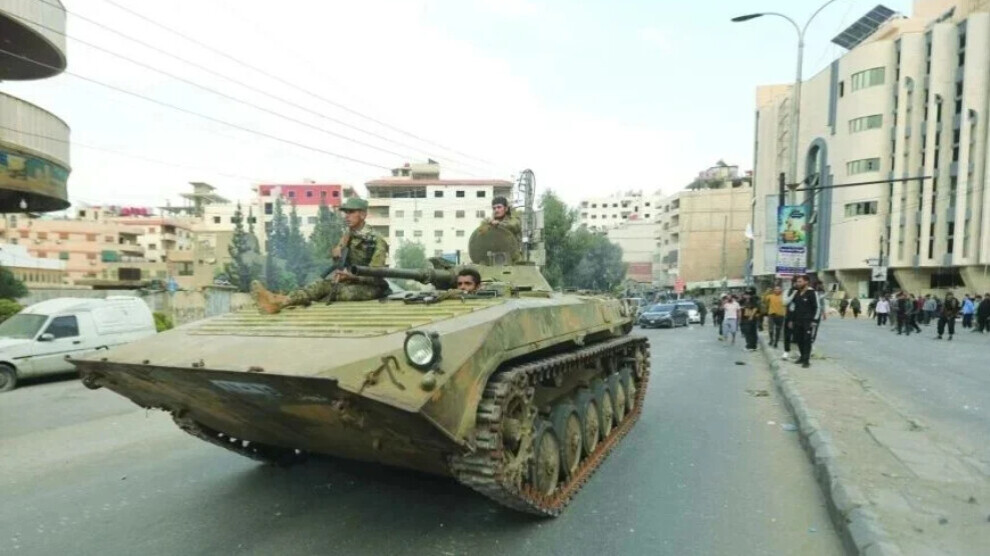The background of HTS attacks on the Druze
The attacks against the Druze are intended to send multiple messages to various parties. These attacks are likely to expand into a broader campaign targeting all peoples in the region.
The attacks against the Druze are intended to send multiple messages to various parties. These attacks are likely to expand into a broader campaign targeting all peoples in the region.

On the evening of April 28, forces affiliated with HTS (Hayat Tahrir al-Sham) launched a heavy weapons assault on the Jaramana area, located south of Damascus. The attacks quickly spread beyond Jaramana to Sahnaya, Ashrafiya, and Suwayda, resulting in the deaths of dozens of civilians.
As previously reported by the Lekolin.org site in its 7 and 13 March articles, Turkey’s National Intelligence Organization (MIT), in coordination with HTS, has devised covert plans for the region. During a meeting at the Turkish Embassy in Syria, MIT officials allegedly instructed HTS commanders to gain control over the Suwayda region and its outskirts, prevent Druze forces from expanding militarily, and create chaos in response to Israeli airstrikes targeting Turkish-occupied T-4 and Palmyra bases. As part of this plan, MIT and HTS allegedly used AI to fabricate a video appearing to show a Druze leader, Marwan Kiwan, insulting the Prophet Muhammad. Immediately after this, attacks against the Druze population began. ISIS members and foreign jihadists within HTS targeted Druze students in Homs and Damascus before turning their focus to Jaramana, where dozens of civilians were massacred on the night of 28 April.
Despite the Druze religious leader condemning both the fabricated audio clip and the attacks, Turkmen groups within HTS, closely linked to the Turkish state, intensified their assaults in Jaramana, Sahnaya, Ashrafiya, Thala, and Suwayda. Initially, the Damascus government remained silent. Later, an agreement was reportedly reached between Druze sheikhs and the government, but it did not have any real impact on the ground. The attacks have continued unabated.
Israel stepped in
Following the HTS attacks, Israel initially issued a verbal condemnation, then announced that it had struck a jihadist convoy en route to attack Druze communities. Although Israeli military and political officials declared they would not tolerate attacks on the Druze, their response has not been a deterrent. The situation remains uncertain.
Risk of further massacres
The Druze community is well-organized but lacks military experience. Continued attacks may lead to a full-scale massacre of the Druze population. The massacres that previously targeted Alawites are now being extended to the Druze. These attacks are just the initial manifestations of a deeply rooted ideology in its weakest form. As HTS gains strength, it will likely carry out more massacre-oriented attacks against the peoples of Syria and the region. This is just a preparatory phase. Therefore, the peoples of Syria must urgently establish self-defense and grassroots organizational structures.
Multiple messages behind the attacks
The attacks against the Druze are intended to send multiple messages to various parties.
Turkish President Erdoğan once said: "Even if we are not the game-makers, we are good at spoiling games." Aware that Turkey has no seat in the future of Syria, Erdoğan aims to sabotage any potential future equation and spread war across a broader region. The Turkish state is signaling all ethnic and religious groups in Syria, Israel, the Coalition, the Arab world, and especially the Kurds.
By retaliating against Israeli airstrikes on the T-4 and Palmyra airbases, Turkey is also sending a message that Israel cannot operate freely in Syrian airspace. While Israel considers the Druze as allies, Turkey wants to block any such alliance and remind Israel of its limitations in Syria.
The Turkish state is also trying to disrupt Israel’s agreements with Arab states. If successful, Turkey would present itself to the Coalition forces as a disruptive but necessary actor in the region.
By threatening the Kurds, especially those who held a conference in Qamishli on April 26, Turkey aims to force them to accept HTS’s terms. At the very least, Turkey seeks to prevent Kurdish unity through acts of mass violence, and is already preparing the ground in Druze cities. Turkmen groups loyal to Turkey have also threatened the Kurds. Additionally, Turkey seeks to block any potential Kurdish-Israeli relations by distracting Israel in southern Damascus while launching a new offensive against the Kurds.
The attacks on the Druze and Alawites are part of a larger strategy to target all peoples of the region. Therefore, it is essential not to remain silent in the face of these attacks. Preventive measures must be taken immediately—otherwise, it may be too late. Only organized forces can stop these massacre campaigns. There is no time to lose.